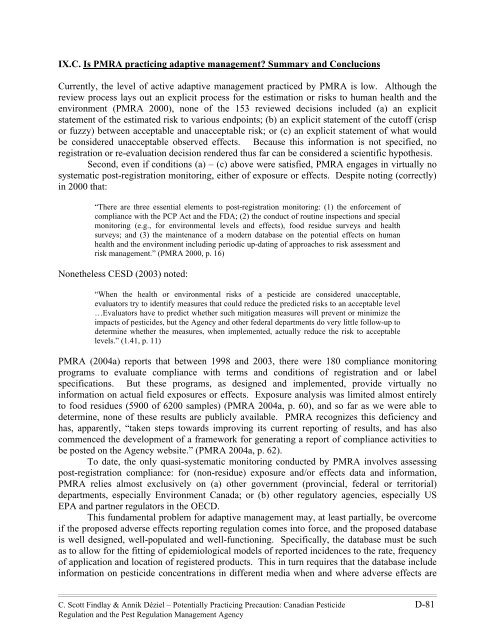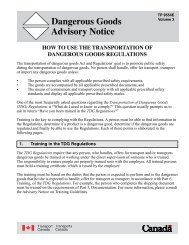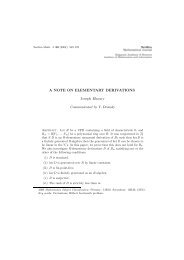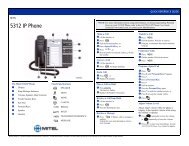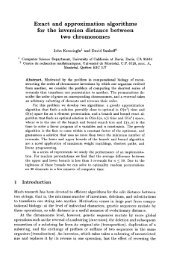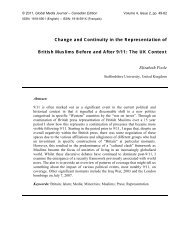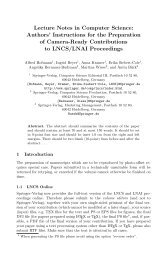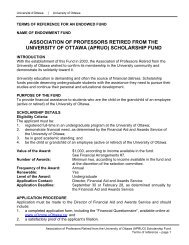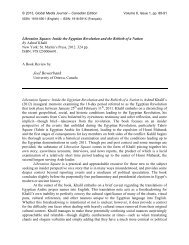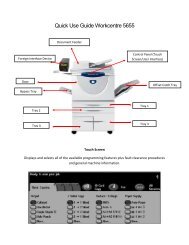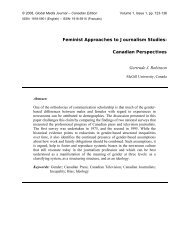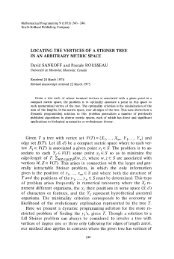PRACTICING PRECAUTION and ADAPTIVE MANAGEMENT ...
PRACTICING PRECAUTION and ADAPTIVE MANAGEMENT ...
PRACTICING PRECAUTION and ADAPTIVE MANAGEMENT ...
- No tags were found...
Create successful ePaper yourself
Turn your PDF publications into a flip-book with our unique Google optimized e-Paper software.
IX.C. Is PMRA practicing adaptive management? Summary <strong>and</strong> ConclucionsCurrently, the level of active adaptive management practiced by PMRA is low. Although thereview process lays out an explicit process for the estimation or risks to human health <strong>and</strong> theenvironment (PMRA 2000), none of the 153 reviewed decisions included (a) an explicitstatement of the estimated risk to various endpoints; (b) an explicit statement of the cutoff (crispor fuzzy) between acceptable <strong>and</strong> unacceptable risk; or (c) an explicit statement of what wouldbe considered unacceptable observed effects. Because this information is not specified, noregistration or re-evaluation decision rendered thus far can be considered a scientific hypothesis.Second, even if conditions (a) – (c) above were satisfied, PMRA engages in virtually nosystematic post-registration monitoring, either of exposure or effects. Despite noting (correctly)in 2000 that:“There are three essential elements to post-registration monitoring: (1) the enforcement ofcompliance with the PCP Act <strong>and</strong> the FDA; (2) the conduct of routine inspections <strong>and</strong> specialmonitoring (e.g., for environmental levels <strong>and</strong> effects), food residue surveys <strong>and</strong> healthsurveys; <strong>and</strong> (3) the maintenance of a modern database on the potential effects on humanhealth <strong>and</strong> the environment including periodic up-dating of approaches to risk assessment <strong>and</strong>risk management.” (PMRA 2000, p. 16)Nonetheless CESD (2003) noted:“When the health or environmental risks of a pesticide are considered unacceptable,evaluators try to identify measures that could reduce the predicted risks to an acceptable level…Evaluators have to predict whether such mitigation measures will prevent or minimize theimpacts of pesticides, but the Agency <strong>and</strong> other federal departments do very little follow-up todetermine whether the measures, when implemented, actually reduce the risk to acceptablelevels.” (1.41, p. 11)PMRA (2004a) reports that between 1998 <strong>and</strong> 2003, there were 180 compliance monitoringprograms to evaluate compliance with terms <strong>and</strong> conditions of registration <strong>and</strong> or labelspecifications. But these programs, as designed <strong>and</strong> implemented, provide virtually noinformation on actual field exposures or effects. Exposure analysis was limited almost entirelyto food residues (5900 of 6200 samples) (PMRA 2004a, p. 60), <strong>and</strong> so far as we were able todetermine, none of these results are publicly available. PMRA recognizes this deficiency <strong>and</strong>has, apparently, “taken steps towards improving its current reporting of results, <strong>and</strong> has alsocommenced the development of a framework for generating a report of compliance activities tobe posted on the Agency website.” (PMRA 2004a, p. 62).To date, the only quasi-systematic monitoring conducted by PMRA involves assessingpost-registration compliance: for (non-residue) exposure <strong>and</strong>/or effects data <strong>and</strong> information,PMRA relies almost exclusively on (a) other government (provincial, federal or territorial)departments, especially Environment Canada; or (b) other regulatory agencies, especially USEPA <strong>and</strong> partner regulators in the OECD.This fundamental problem for adaptive management may, at least partially, be overcomeif the proposed adverse effects reporting regulation comes into force, <strong>and</strong> the proposed databaseis well designed, well-populated <strong>and</strong> well-functioning. Specifically, the database must be suchas to allow for the fitting of epidemiological models of reported incidences to the rate, frequencyof application <strong>and</strong> location of registered products. This in turn requires that the database includeinformation on pesticide concentrations in different media when <strong>and</strong> where adverse effects areC. Scott Findlay & Annik Déziel – Potentially Practicing Precaution: Canadian Pesticide D-81Regulation <strong>and</strong> the Pest Regulation Management Agency


